11230 A CARVED MAHOGANY GOTHIC REVIVAL SIDE TABLE BEARING A MOST UNUSUAL CARVED STATUARY MARBLE TOP English. First Half Of The Nineteenth Century. Measurements: Height: 34″(86.4 cm) Width: 48 1/2″ (123.2 cm) Depth: 22″ (55.9 cm).
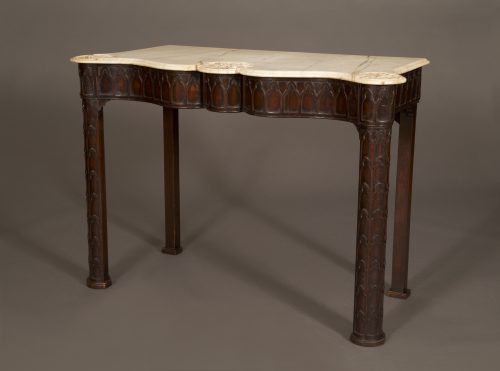
Research
Of mahogany and statuary marble. The repaired serpentine shaped marble top set with three relief carved satyr mask to the lobed front corners and center. The frieze of conforming shape is carved with repeating low relief gothic arcaded motifs. The bow-fronted forward legs are carved with conforming arches with chamfered inner edge. The rear legs of plain square form.
Marks:
Very old chalk inscription to inner rear rail:
Weekes
Provenance:
Old Maryland Collection.
The present table is an example of the reinterpretation of medieval Gothic architecture that began in England circa 1740, and remained popular among connoisseurs and aesthetes of the late eighteenth and early nineteenth centuries. Early manifestations were purely decorative and often blended with exotic elements, while 19th century designs tended to be more scholarly in nature. On the present table, the gothic motif is executed with aesthetic simplicity in its frieze and bow-fronted forward legs, embellished with a solid carved gothic arcaded motif resembling trefoil lancet arches, such as those found in the stained glass windows of the York Minster Chapter House (figure 1).
Most unusually, the marble top, which follows the undulating curvature of the frieze, is most unusually, carved at the center and front corners with representations of the ‘Green Man,’ with leaves as eyebrows and roots growing under the chin and on the forehead. These masks, which had origins in the classical world, were known in Medieval times as babewyn, ugly or demonic beings often carved in stone and found in churches. The fashion for architectural grotesques was present throughout Europe from the Renaissance through to the revival styles of the 18th and 19th century. A group of 18th century French drawings based on metalwork designs for satyr’s heads dating from 1679, today in the Victoria and Albert museum, share the whimsical facial features with those carved on the present table (figure 2).
The only other known examples to bear such marble tops carved with masks is a pair of tables belonging to the collection of the Lady Lever Art Gallery (Nos. LL4319, LL4320) (figure 3),which are closely related to the present piece. These, too, have an undulating frieze with arcaded low relief, legs (of hexagonal form in this instance) decorated with carved Chinese latticework connected by openwork brackets, and Convent-Siena marble tops which follow the curves of the table. That pair had been sold at Christie’s, Manson & Woods on 6 July 1916 in a sale containing the property of Mrs K.H. Gosling, the late Rt. Hon Sir John Eldon Gorst, the late Lieut-Colonel the Rt. Hon Sir William Carington G.C.V.O, K.C.B. and others. The tables are mentioned on page 21 of the catalogue, as item 130, and appear to have sold for 350 guineas. Lord Leverhulme purchased the tables subsequently from the dealer D.L. Isaacs on 18th July 1916, for what appears to be £374 and 17 shillings. The Leverhulme tables are described by Percy Macquoid in English Furniture Tapestry and Needlework of the XVIth- XIXth centuries, with examples of other styles. A record of the collection in the Lady Lever Art Gallery, Port Sunlight, formed by the first Viscount Leverhulme (Batsford, 1928), who notes that the “corners and center are carved with satyr-masks, a very unusual and rare feature on these tops.”1
Footnotes:
- Macquoid, Percy. English Furniture Tapestry and Needlework of the XVIth- XIXth centuries, with examples of other styles. A record of the collection in the Lady Lever Art Gallery, Port Sunlight, formed by the first Viscount Leverhulme. Batsford, 1928, p.65, no.234.
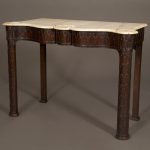
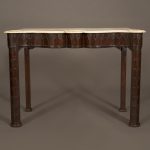
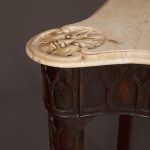

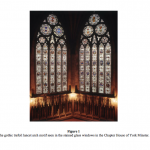
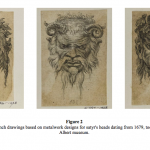
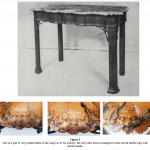
Comments are closed.